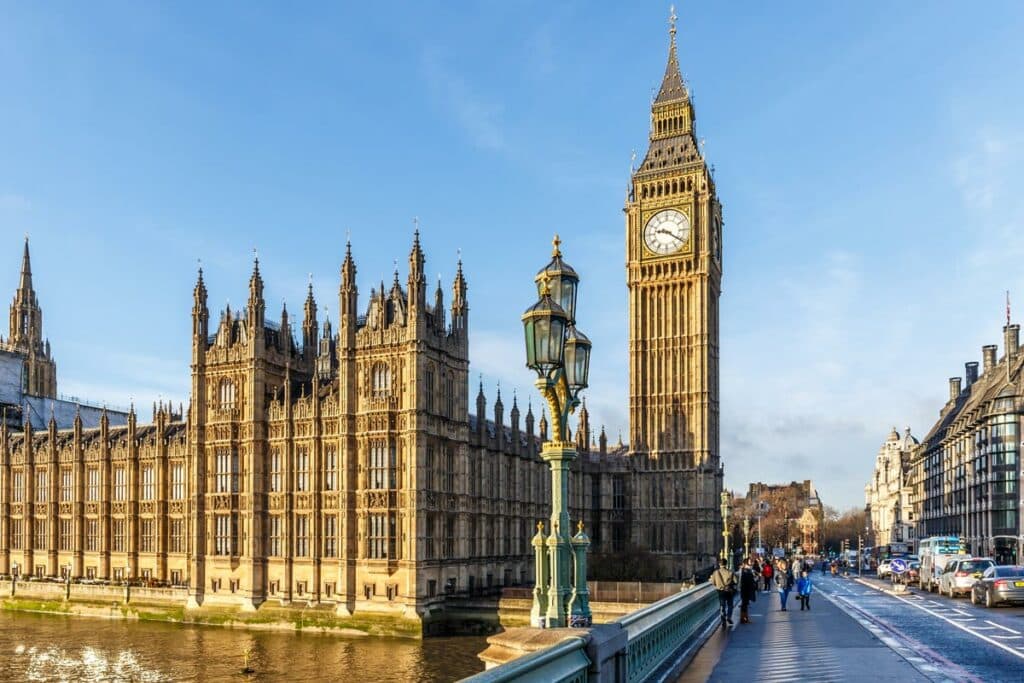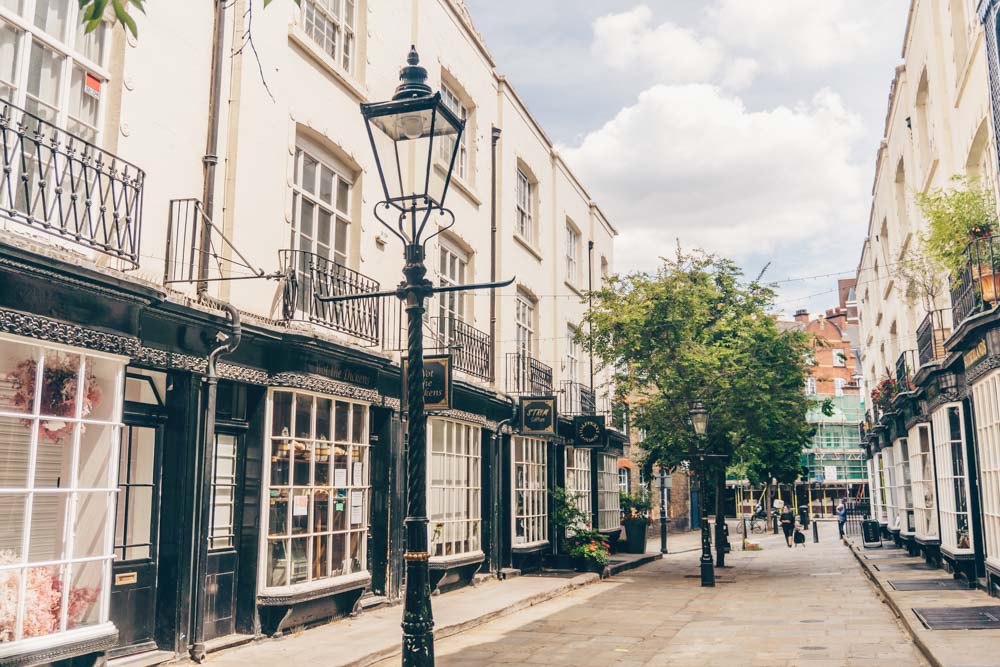Did you know the City of London has more churches than you’ve had hot dinners? Here’s a few of our top picks.
With its long and fascinating history – that you can read all about here – it should come as no surprise that there are heaps of churches in the City of London (50+ to be slightly more precise.)
And, as you can imagine, between writing about all the cool restaurants, art exhibitions, bars and general goings on in London, we don’t have time to write about each individual church.
So these are a few of the best – from the totally historic to the downright beautiful.
City of London Churches
All Hallows by the Tower
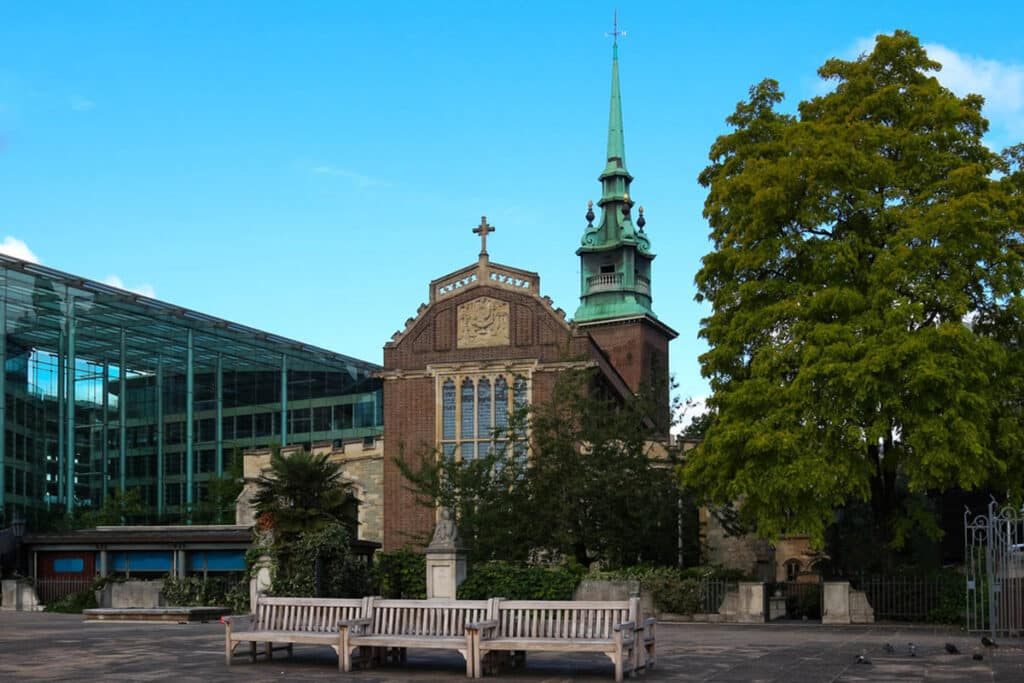
Founded in 675 by Erkenwald, Bishop of London, All Hallows by the Tower is the City of London’s oldest church – as you can imagine, it’s steeped in history.
Its most dramatic moment is most probably its survival of an event that destroys most of the City’s ancient churches and changes the landscape of London forever: The Great Fire.
During the blaze we get an astonishing account of the event when Samuel Pepys climbs the spire of All Hallows by the Tower and looks out over the burning city. The Church only survived the fires due to the labours of Admiral Penn who controlled the flames and then went on to father the founder of Pennsylvania.
The church had another brush with danger during WWII when a German bomber landed one right on top of it. Most of the building was destroyed and as such the current spire and nave are post-war builds. Descend to the undercroft though, and you’ll find parts that date back to the Normans, and even a bit of old Roman Pavement.
Address: All Hallows by Tower Church, Byward St, London EC3R 5BJ
Christ Church Newgate
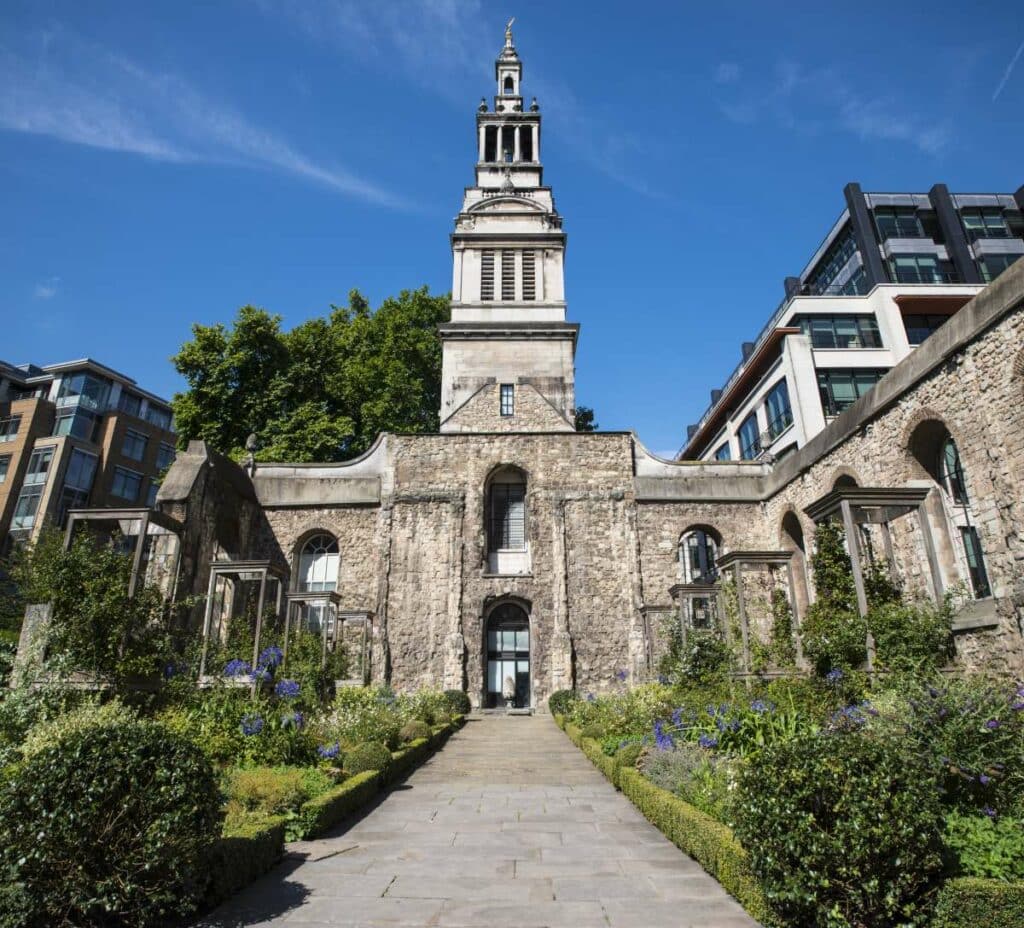
Christ Church Newgate was built in 1224 by an order of Franciscan monks who had been given a grotty patch of land in The City to call their own. They quickly set about doing the best they could to improve their lot in life and, by 1306, had begun work on an imposing structure for a new church.
Murky as the history is, we can’t be sure but it’s quite likely this church was the tallest around at the time it was completed.
The great fire of London managed to claim Christ Church Newgate though and when the soot had settled Sir Chirstopher Wren was commissioned to redesign it. No doubt having his eye on an even bigger project just around the corner (St. Pauls) he did so at a less imposing scale.
That building survived right up until the blitz when another German bomber blew the lid right off Christ Church Newgate and flames destroyed pretty much anything left inside. The stones survived and have been left as a monument, now home to a semi-quiet flower garden.
Address: Christ Church Newgate, King Edward St, London EC1A 7BA
Church of St. Bartholomew the Great
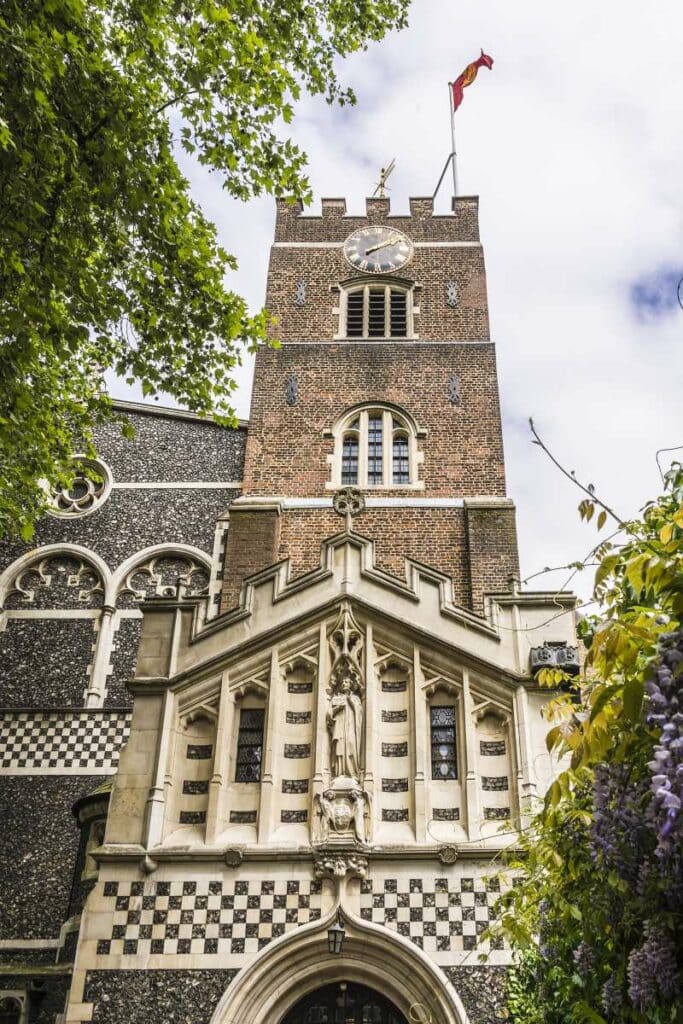
The site of The Church of St. Bartholomew the Great is possibly the oldest site of continuous worship in London – unless you count the bemusing ritual they still enact at the London Mithraeum.
The first person to treat this as a holy site was a courtier of Henry I who went by the name of Rahere and claimed to have had a prophetic vision telling him to build an Augustinian Priory. He did so in 1123 and the holy legacy has been passed down all these years until now.
Its reputation for miracles carried on with it too. And then after the reformation it became a parish church but due its size was left to fall ro ruin.
What survived was restored and added to and over many centuries was used as a blacksmith’s forge, factory and printing office – the latter even employed the great Benjamin Franklin.
The church has since returned to its original function and in more modern times served as a set for the film Four Weddings and a Funeral.
Address: Church of St. Bartholomew the Great, W Smithfield, Barbican, London EC1A 9DS
St. Stephen Walbrook
The church of St. Stephen Walbrook exists in its present form thanks to, again, Sir Christopher Wren.
With its stunning dome and use of natural light it’s been praised as the most beautiful of all Wren’s churches and has moved many notable people, including the sculptor Canova.
The original church was built on the banks of a small stream (or brook) that ran through London as far back as its Roman beginnings. That stream still runs but now deep underground – much like the Fleet river it was covered over.
After the first structure burnt down in the Great Fire (noticing a theme here) Wren was commissioned to redesign it (again, the theme) and that’s what you see today. The finishing touch is the altar piece – designed by Henry Moore.
Address: 39 Walbrook, London EC4N 8BN
St. Mary le Bow
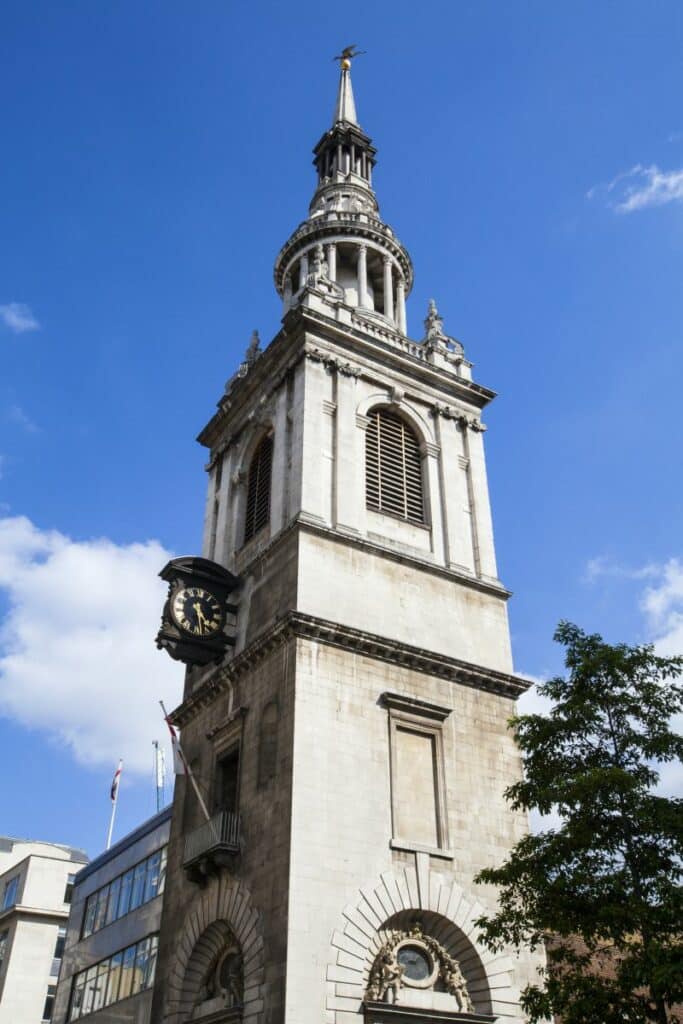
The church of St. Mary le Bow is another of London’s oldest. It was founded here in the 11th century by then-Archbishop of Canterbury Lanfranc. The site he chose, Cheapside, was one of the main streets of London at the time and the church would have been quite a presence.
It’s been rebuilt a fair few times since the Norman days – once by Wren after the Great Fire (surprise, surprise). His reconstruction was the second most expensive commission he ever undertook – the first being St. Paul’s. It cost £15,000, a whopping sum for the time.
St. Mary le Bow is also known for another famous Londoner: Dick Wittington. According to legend he was led to become Lord Mayor of London by the calling of the church bells.
It was also said that if you were born within earshot of the bells you were a true Londoner.
Address: St Mary Le Bow Church, Cheapside, London EC2V 6AU
St. Dunstan in the East
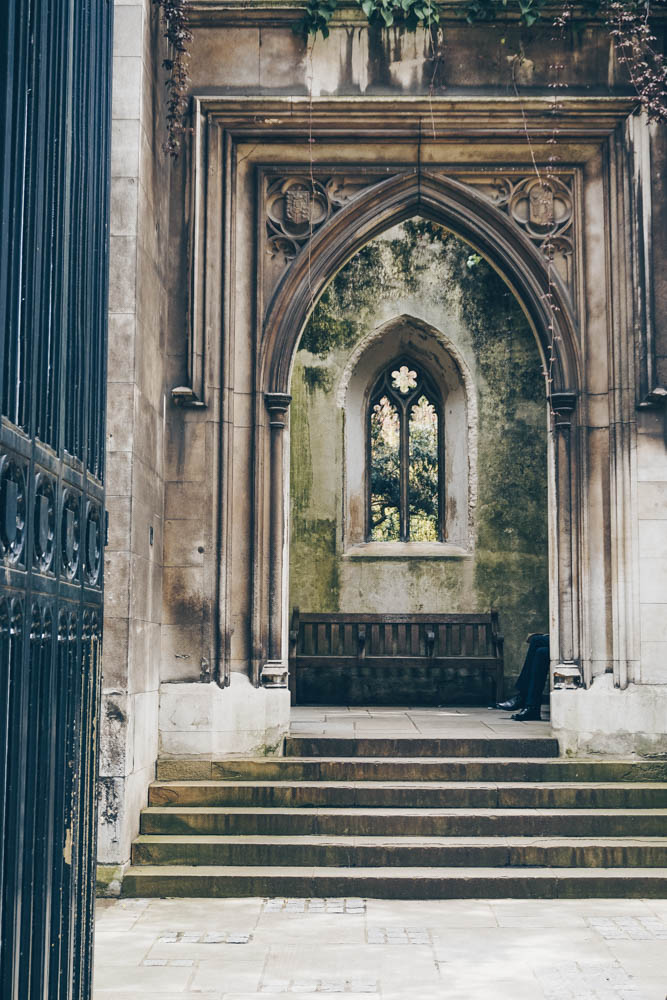
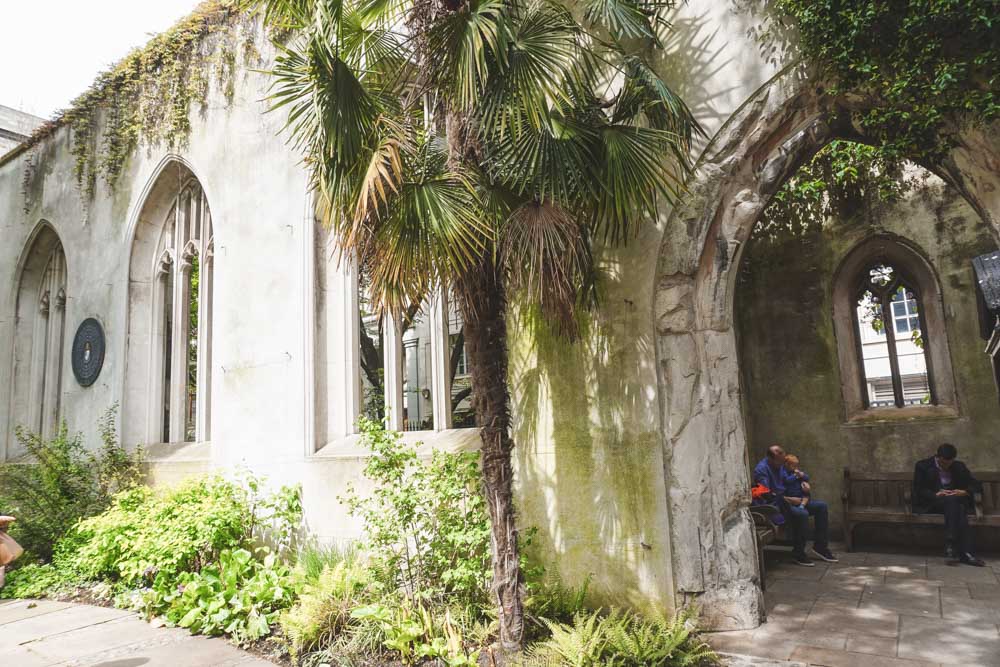
Another one of the City of London’s churches that was gutted in the war and has been left to stand as a garden monument is St. Dunstan in the East.
This is another of Wren’s great London churches and said to be the one he designed to be most structurally sound. Legend has it that during a particularly strong storm someone came running to Wren to tell him that his church steeples had been damaged. Wren’s reply was: “Not St. Dunstan’s”.
He was proved right when that German bomb fell. It took out most of the nave and surrounding structures but the church tower was left standing. You can still see it today.
Address: St Dunstan’s Church, St Dunstan’s Hill, London EC3R 5DD
St. Olave’s on Hart Street
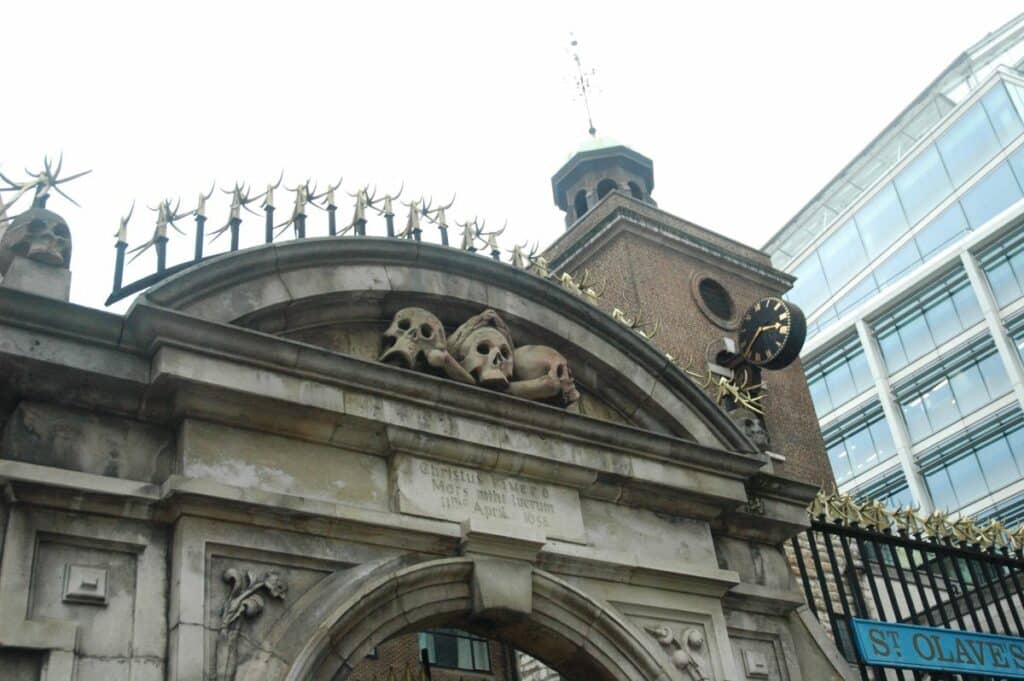
St. Olave gets its name from its Nordic heritage. It is dedicated to the patron saint of Norway, King Olaf II who was there at the battle of London Bridge and fought alongside King Ethelred of the Saxons against the Danish invasion.
It’s got claim to be another of London’s oldest churches, having been founded in 1056 (so they say). It’s hard to verify these dates but what we do know with relative certainty is that the original structure was built entirely of wood. It wasn’t until the 1400s that the structure would be rebuilt in stone.
St. Olaves appears in two notable events of London’s history, the first being the Great Plague of 1665 which is said to have started right next to the church. 300 victims of the disease, as well as the woman blamed for bringing it to London are buried in the churchyard.
The second event is – you guessed it – the Great Fire. This time though we have a church that deviates from the usual course of events. The fires had reached within 100 yards of St. Olaves before it was saved by a change of wind.
Address: 8 Hart St, London EC3R 7NA
St. Giles Cripplegate
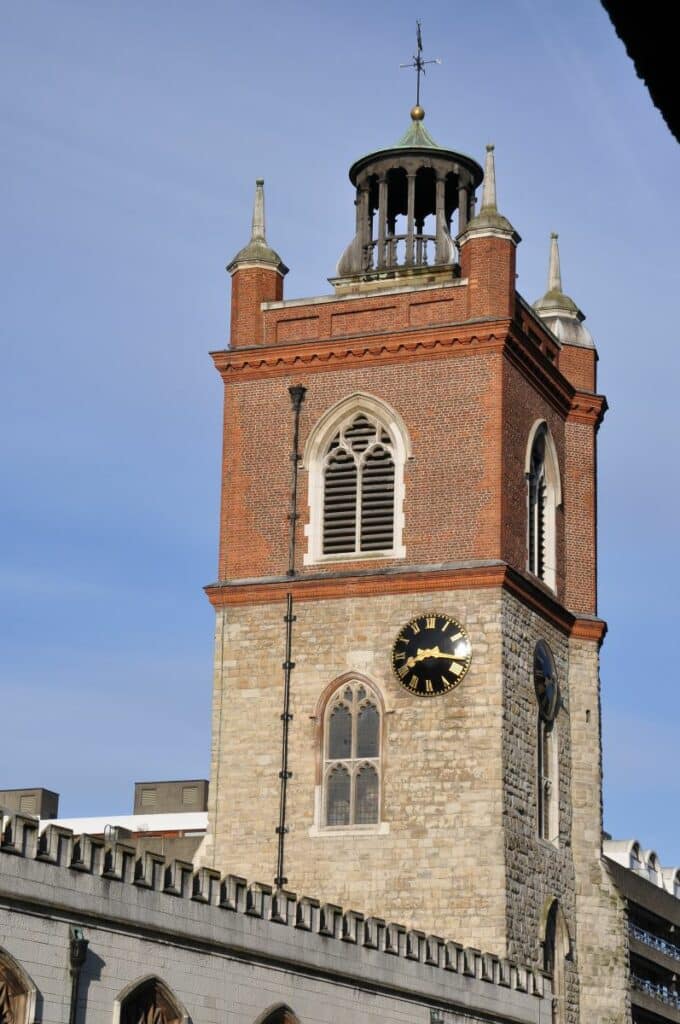
Nestled in among the Barbican complex you can find St. Giles Cripplegate, one of the few remaining medieval churches in London. As you may guess from the name, it’s dedicated to St. Giles, patron saint of the disabled and infirm.
Much like St. Olaves it survived the great fire, though St. Giles was hit by bombs during the blitz. The structure you’re seeing today is a faithful reconstruction done from plans drawn up in the 1500s.
It was originally built as a replacement to a Saxon church that had been on the site longer than the history books can recall, replaced in 1090 by the Normans in an area that would have been, at the time, outside the walls of London.
Address: St. Giles Cripplegate, Fore St, Barbican, London EC2Y 8DA
City of London Churches Practical Information and Map
- The City of London is not a massive place. You should feasibly be able to walk between these churches within a day, easily. Though if you want to really spend some time in each one you might find your time running a little tight.
- Remember to be respectful. These are important religious places. Whether you believe in God or not, a lot of people take this very seriously.

